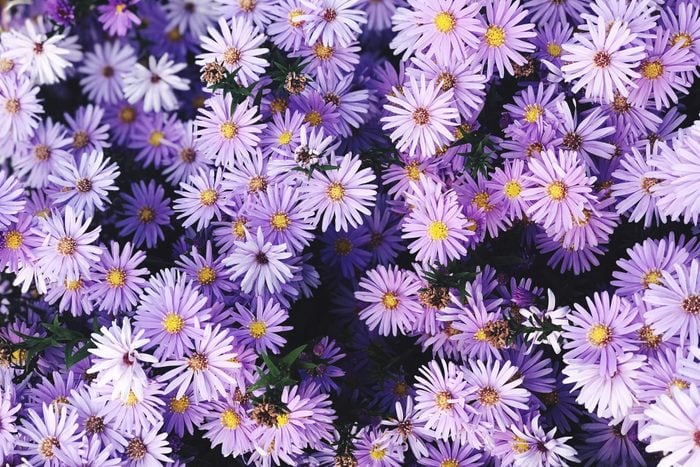
Aster
These star-shaped blooms take their name from the Greek word for “star,” and in Greek mythology, they represented love and were also burned to ward off snakes. In Victorian culture, however, they represented daintiness and charm. If you grow asters, here’s how to divide perennials.
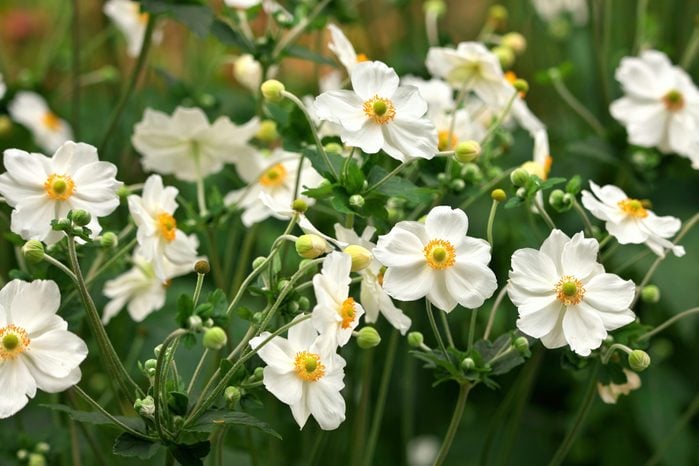
Anemone
Another flower with Greek roots—anemone stems from the word for “wind.” This short-lived flower represented anticipation once upon a time, but also had negative connotations, representing fading hope. In modern times, they may symbolize fragility.

Black-Eyed Susan
The name of this flower is often credited to poet John Gay, who wrote an Old English poem about a woman with the name. This bright, yellow-petalled flower is meant to represent justice—now that’s a flower meaning we can all get behind!

Bluebell
It’s not hard to see where these flowers get their name, with their purple-blue hue and their bell-shaped blossoms. This flower represents kindness, and is a great gift to give to someone to show appreciation for friendship, love and support.
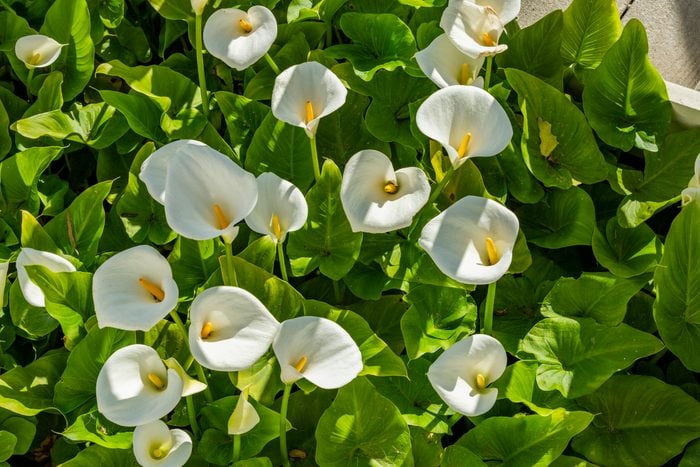
Calla Lily
Despite their name, these aren’t actually lilies, and though they’re known for decorating caskets at funerals, they don’t actually represent death. These blooms get their name from the Greek word kallos, meaning “beauty,” and nowadays often feature in bridal bouquets. Give a bouquet to someone you find beautiful inside and out!
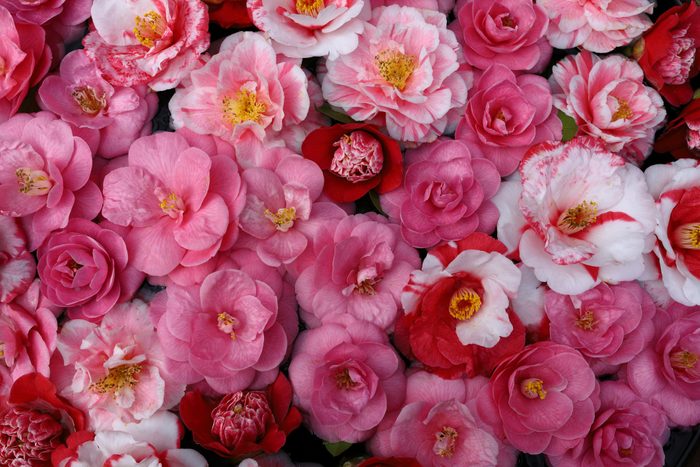
Camellia
In Victorian times, these flowers were thought to denote “my destiny is in your hands.” Each shade means something slightly different, so choose according to the message you want to give—white for someone you like, pink for someone you miss and red for a partner you’re already with.
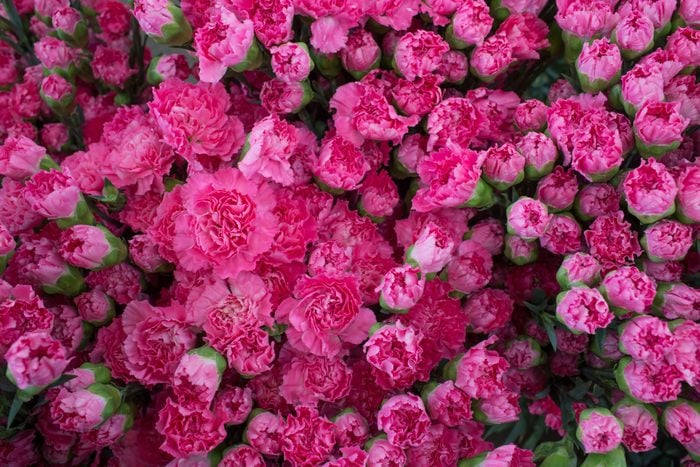
Carnation
These flowers might indicate that someone is on a budget, but that doesn’t diminish their beauty. Certain colors are great for Valentine’s Day—red symbolizes affection, while pink means “I’ll never forget you”—while white, meaning “sweet and lovely,” is popular on Mother’s Day. Stay away from yellow, though—this indicates disdain.
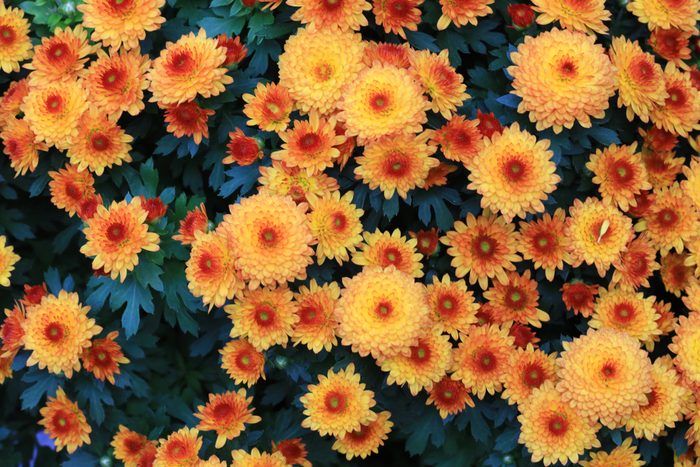
Chrysanthemum
While these blooms may have caused issues in a spelling bee or two, their meaning is much simpler—they stand for honesty. The name comes from the Greek words chryos, meaning “gold,” and anthemon, meaning “flower.” The original yellow, however, also symbolizes unrequited love.
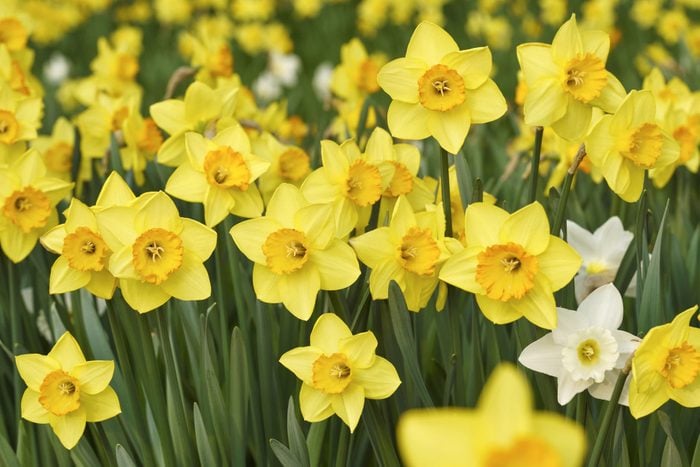
Daffodil
Daffodils symbolize new beginnings, regard and chivalry. They’re best given to someone embarking on a new path in life (or maybe letting go of an old one!). These bulbs are best planted in the fall for a riot of color in your yard come spring.
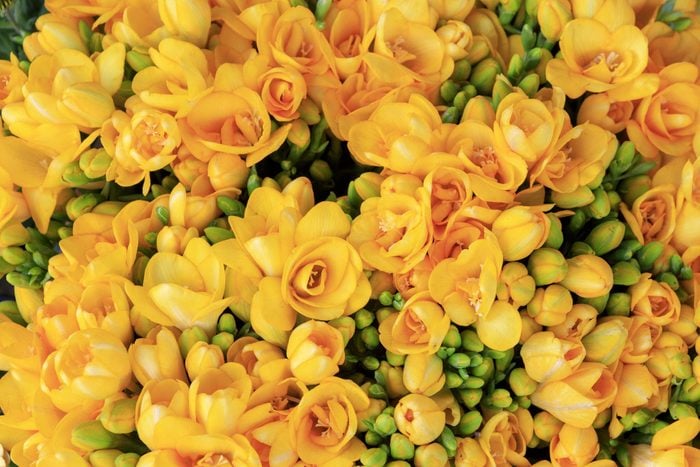
Freesia
Citrus-scented freesia symbolizes trust and friendship, a flower meaning that goes all the way back to its naming. Botanist Christian P. Ecklon named the South African flower after his dear friend Friedrich Freese as a celebration of their bond.
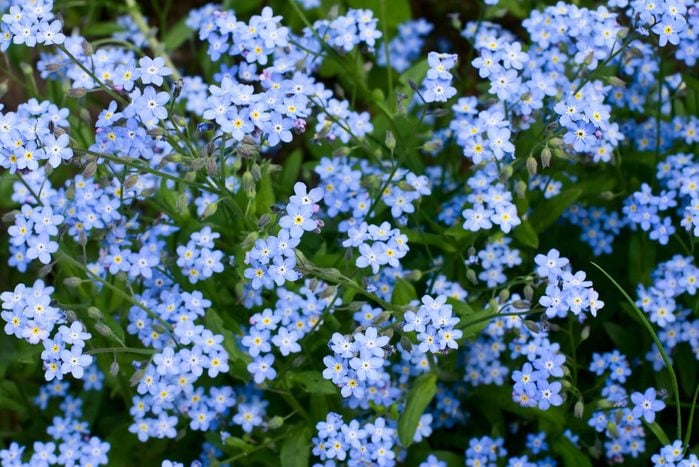
Forget-Me-Not
These blue-violet blooms have a meaning that’s pretty easy to guess—it’s right in the name! Send a bouquet to a friend or family member that you miss, and they’ll definitely appreciate the thought. Throw in one of these unique vases to make it a gift that lasts forever!
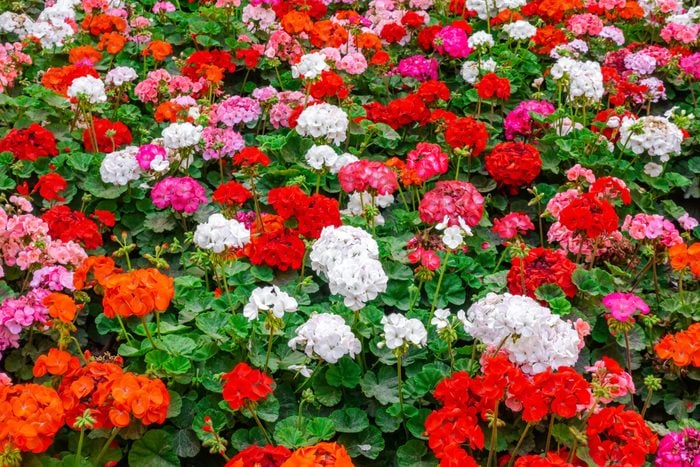
Geranium
These beautiful summer flowers are perfect for decorating your yard or even winding through your deck. They signify silliness and fun, so send them to someone who makes you laugh!
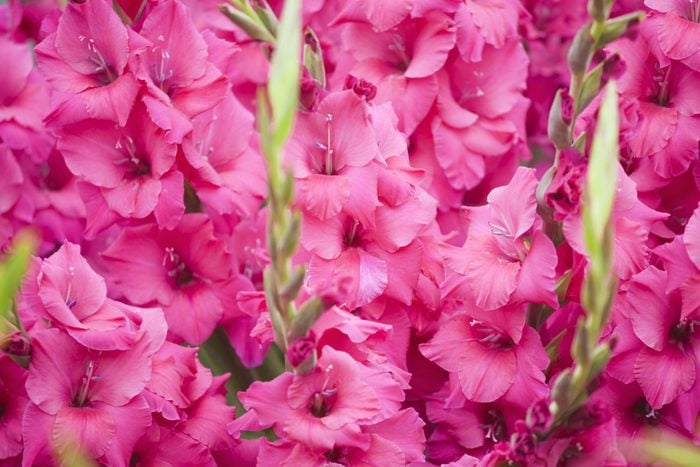
Gladiolus
If you immediately thought of the word “gladiator,” you’re not far off the mark. Both words come from the Latin word gladius, meaning “sword.” They symbolize integrity, strength and victory—so gift them to someone who’s being faced with a challenge or just overcame one!
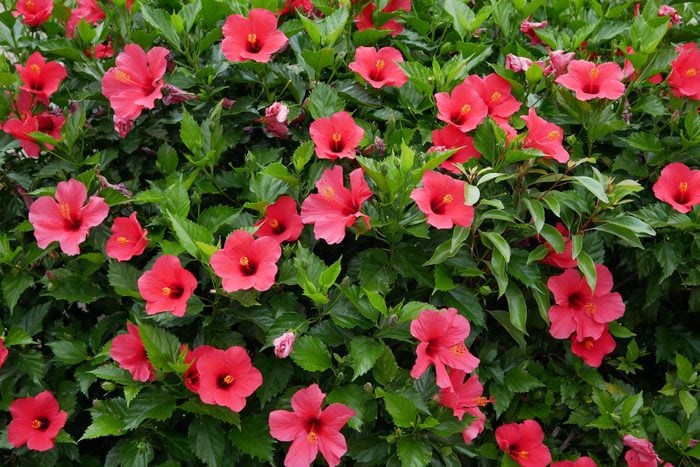
Hibiscus
Hibiscus has, since Victorian times, symbolized delicate beauty. The flower itself, however, is fairly hardy, so you can easily grow the showy blossoms for a pop of color in your hard. A glass of sweet hibiscus iced tea in the summer is an added bonus.
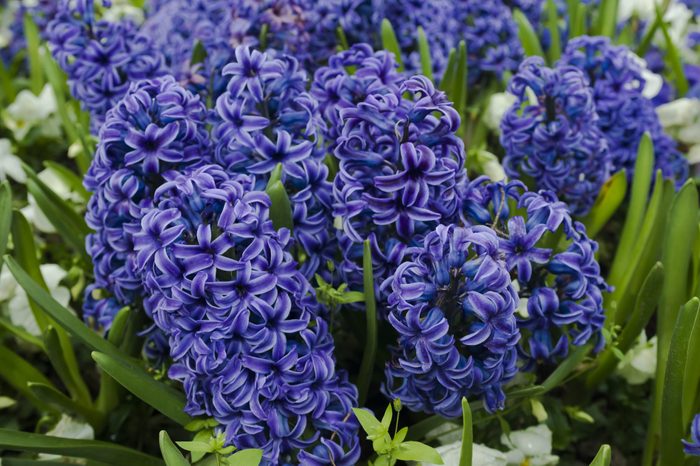
Hyacinth
This fragrant spring flower signifies sincerity and constancy, so it’s a great addition to bridal bouquets—the light color fits into almost any arrangement. The purple version of these blooms also signifies “please forgive me”—so if you’re trying to make up after a spat, these are the ones to reach for at the florist.

Jasmine
This sweet-scented white flower is often associated with grace and elegance, and is a popular note in perfume. It also has another meaning that makes it perfect for presenting to a romantic partner: sweet love.
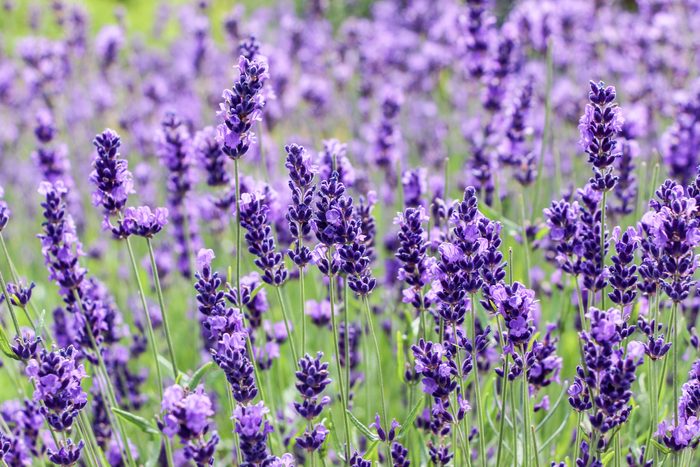
Lavender
It’s popular in tea, desserts and so much more, but this gorgeous bloom is also perfect for a bouquet that signifies devotion. (Consider a mason jar flower arrangement for your bouquet.) Lavender’s scent is said to have aromatherapeutic benefits, so the recipient will be left feeling loved and relaxed.
t..)
Lilac
Lilacs stand for love, but what kind of love depends on the color. Purple lilacs represent the “butterflies-in-your-stomach” emotions of first love, while magenta lilacs stand for more mature love and passion.

Magnolia
The southern flower takes its name from 17th-century French botanist Pierre Magnol, and symbolizes dignity and nobility. It’s widely used in pop culture—Steel Magnolias, anyone?—and is also the name of a bakery famous for its banana pudding.
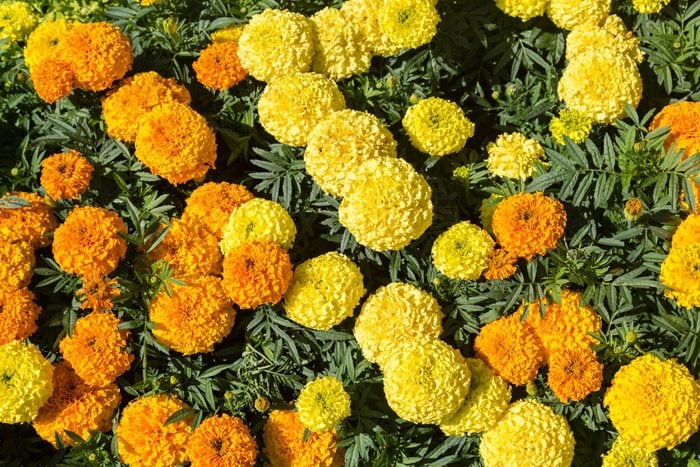
Marigold
The sunny blossoms were originally grown by the Aztecs, who believed they were healing—Spanish conquistadors may have picked up on these and brought them back to monasteries. Nowadays, the blooms represent grief and are used for Mexico’s Dia de los Muertos (Day of the Dead), and are believed to guide spirits back home.
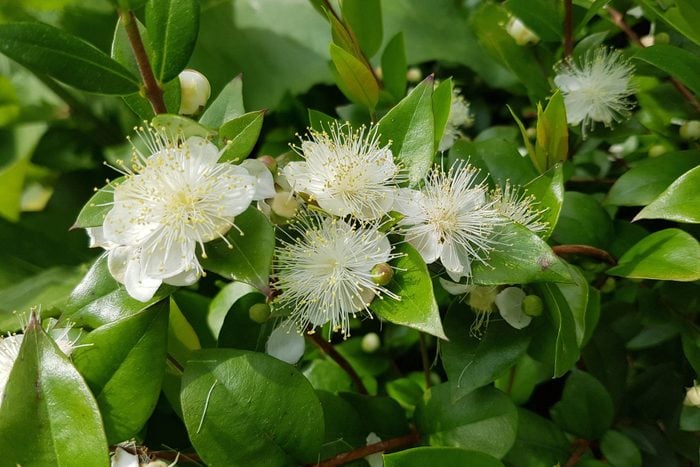
Myrtle
Its name may sound a little old-fashioned, but the bloom’s always in style! This flower’s white or pink petals are ideal for a wedding bouquet or even as wedding decor, as it symbolizes good luck and love in a marriage.
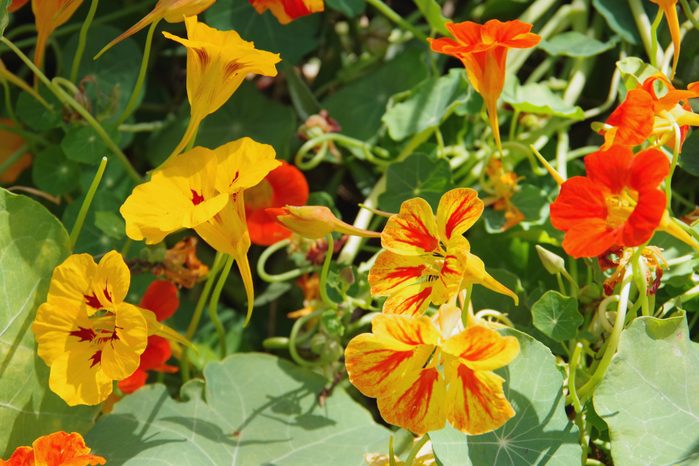
Nasturtium
This flower is a contradiction of sorts—while its name comes from the Latin nasus tortus, meaning “nose tweaker,” it actually stands for patriotism and victory. It’s also one of many edible flowers, known for a taste that ranges from mildly peppery to one that’ll actually make you, well, tweak your nose.
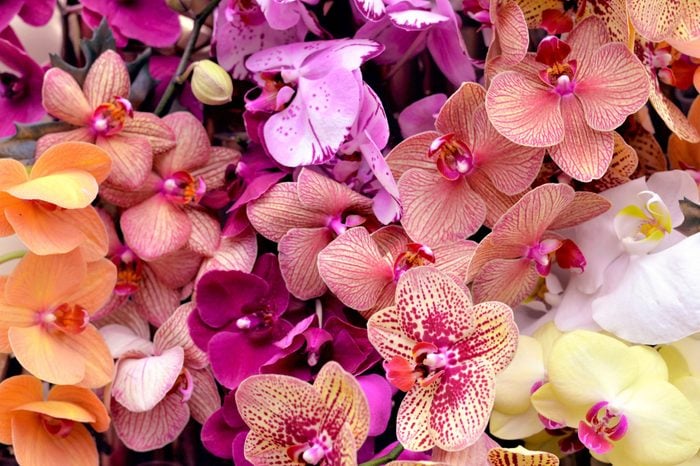
Orchid
Orchids are known for their beauty, and are often presented as some of the most romantic flowers you can give someone. Make a bouquet with these with caution, though—these blooms symbolize fertility. While they’re known for purple or pink petals, you can also get different varieties, like this white dove orchid.
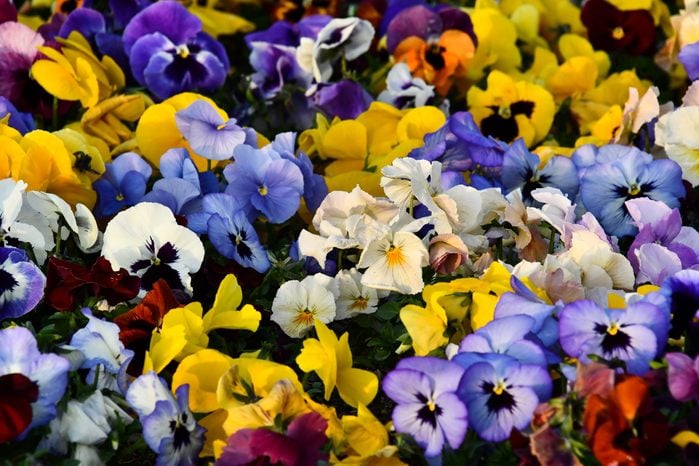
Pansy
Have a tough deadline coming up? Maybe you should buy yourself some pansies. Their vibrant, velvety petals are said to inspire thoughtfulness—which makes sense, considering the name comes from the French word penser, meaning “to think.” They also stand for remembrance, which is why you often see them at funerals or planted at gravestones.
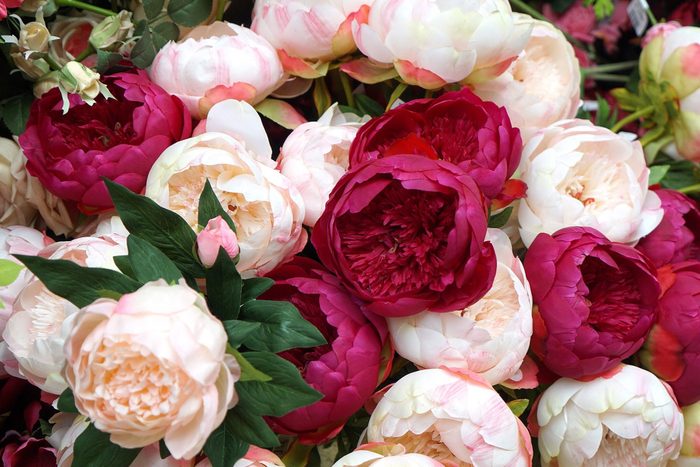
Peony
These delicate, fluffy blooms likely take their name from Paeon, the Greek physician of the gods. It makes sense, then, that peonies signify healing and care, and are ideal to send to someone in recovery. Here’s everything you need to know about growing peonies.
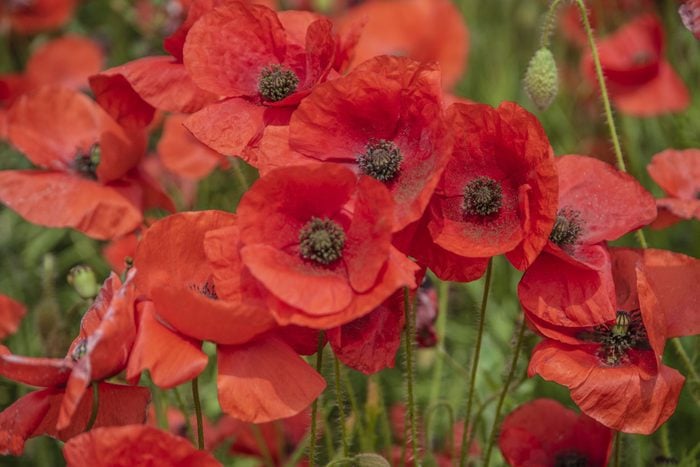
Poppy
While poppies are associated with sleep and death, they also have a related, though softer, flower meaning: loss of a loved one. It’s why you’ll see people wearing red poppies on Memorial Day in the U.S. and Remembrance Day in the U.K. Poppy seeds, of course, are popular in a number of recipes.

Rose
Roses are red, violets are blue (are they really, though?), so the poem goes. Red is definitely the most popular color when it comes to roses, usually used to represent romance, which is why this hue sells out around Valentine’s Day. However, rose color meanings are varied and wide, so don’t be afraid to use different colors for other occasions!
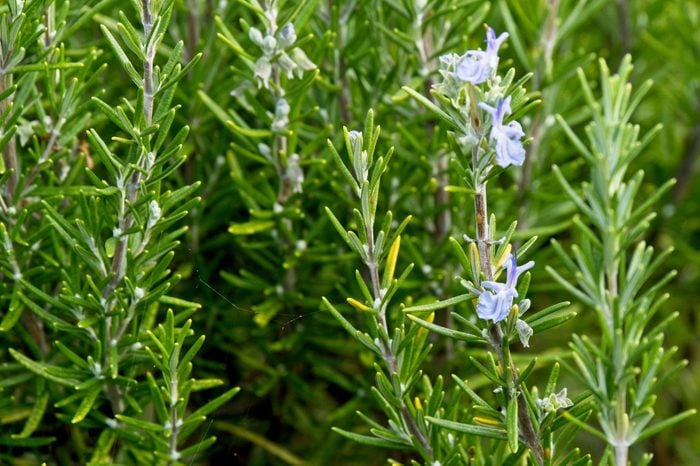
Rosemary
While you might be more likely to use rosemary in an Italian recipe, this herb’s tiny blooms actually stand for remembrance, so adding a few sprigs to a bouquet works just fine. Send rosemary blossoms to someone you miss or just keep a few for yourself—they’re also said to enhance memory.
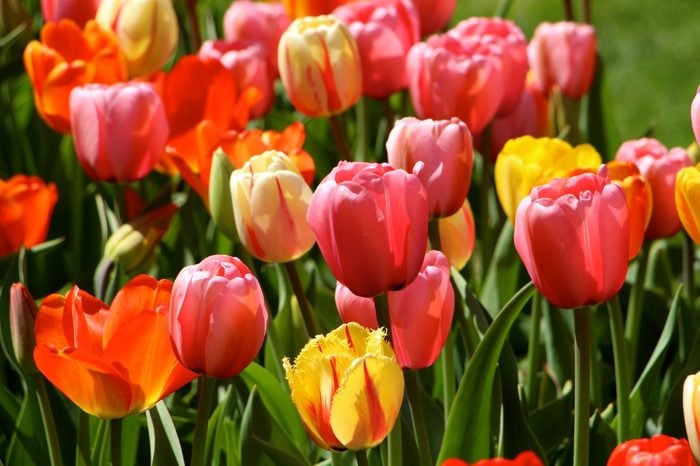
Tulip
Roses aren’t the only flowers you can give on Valentine’s Day; tulips can do the job as well! “Tulip” comes from the Turkish word for turban, as the flowers prominently feature in a Turkish folktale about devoted lovers. Because of this, tulips denote eternal love and devotion—definitely a pretty romantic sentiment, we’d say!
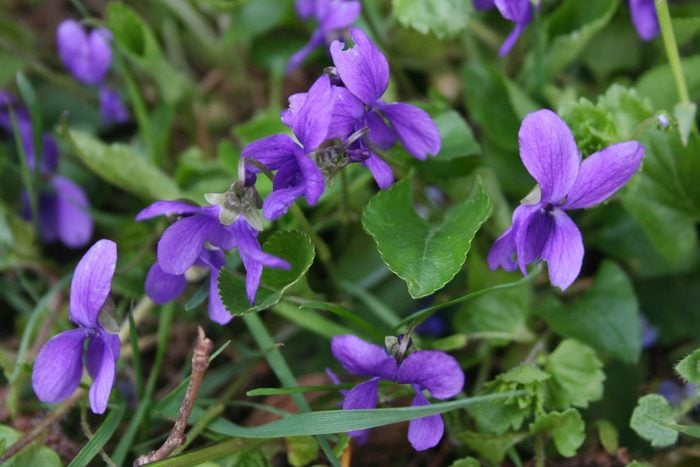
Violet
These purple flowers aren’t just gorgeous, they also have a variety of meanings: loyalty, devotion and faithfulness. While these may be great for a romantic relationship, they can also be used for friends or family. Fun fact: Violets also come in white and blue (so the rhyme really is true!).
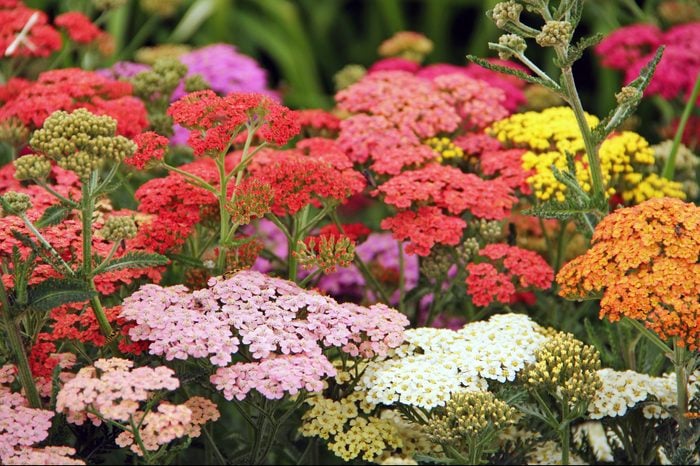
Yarrow
It might not be the prettiest or the most popular bloom, but yarrow has a sweet meaning: It symbolizes love. This quirky wildflower may not be the star of the show, but it works well to complement larger, showier blooms.

Zinnia
These bold blooms work wonders in the garden with their gorgeous color, but their meaning is much softer. Zinnias stand as a reminder to never forget absent friends and lasting affection, so send a bouquet to a faraway friend today—or just get them a flower subscription.
